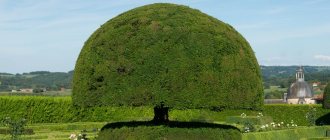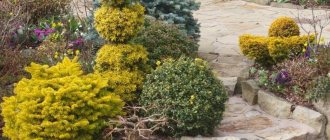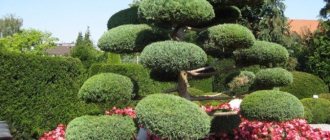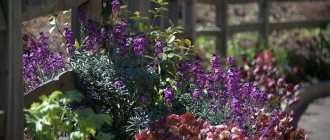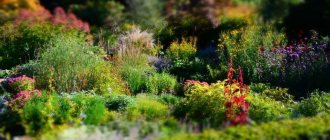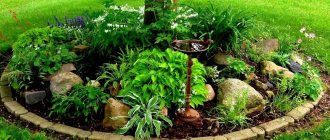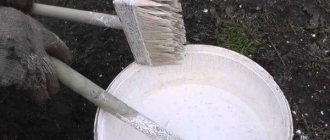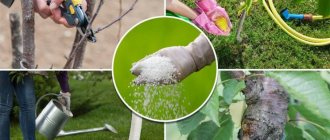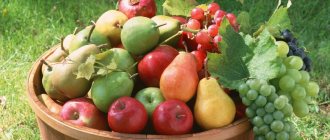Conifers have always occupied a special place in landscape design. Spruces, thujas and pines have become firmly established in summer cottages. However, they have more outlandish brothers in needles, which can also exist perfectly well in the climate of the middle zone.
A popular New Year's song that everyone knows tells about a Christmas tree that is cold in winter and therefore taken home from the forest. We have a different story and we will take home, or rather, to our garden plot, unusual coniferous plants from distant countries that do not care about our winters.
- How to create a beautiful composition of conifers: 9 original ideas with photos
Advice from a landscape designer with a detailed analysis of options for different areas.
Pine
From the pine family, all types of spruce, pine and fir are used in ornamental gardening.
From natural conditions, medium-sized, and less often tall, trees have moved into gardens and are successfully cultivated, and dwarf coniferous plants have been bred through selection.
- Pines and spruces thrive on sandy and rocky soils, but on loams and black soils they require high-quality soil drainage, since they do not tolerate stagnant moisture.
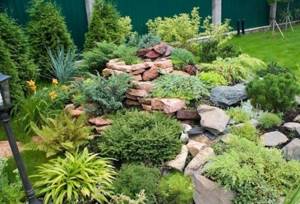
- Fir is one of the most beautiful coniferous species. It has a property not inherent in other coniferous plants - it reproduces by layering. Having dug up the young shoots, they can be replanted and in a few years you will get a full-fledged plant.
Fir grows well on sandy and rocky soil, loam and black soil.
- Larch also has its own “zest” - unlike its coniferous relatives, it sheds its needles for the winter, just as deciduous trees shed their leaves. In autumn, before shedding, larch needles change color from green to various shades of yellow.
Like all pine trees, the plant is unpretentious and not capricious.
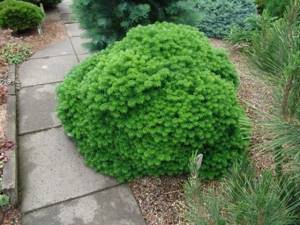
Cypress
The main representative of the cypress family, the cypress is a tall tree with a narrow pyramidal crown. The plant is not frost-resistant, so it is grown in regions with mild winters. In addition, cypress is sensitive to gas pollution in city streets and does not tolerate crowded plantings, which also limits its scope.
Where climatic conditions allow the use of cypress, it is included in the mountain landscape with multi-level buildings, group plantings are created and framed alleys.
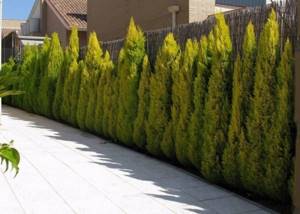
The most striking and frequently used representative of cypress trees in decorative landscaping is juniper. The genus includes low-growing and large trees, reaching a height of 15 m, as well as shrubs of various shapes and habit.
- Thujas are coniferous evergreen trees; most species are frost-resistant and can easily tolerate pruning. They are equally easy to propagate by seed and cuttings.
The variety of species and varieties makes it possible to use thuja in almost any type of planting: groups, tapeworms, hedges, creating a background, alleys and even borders.
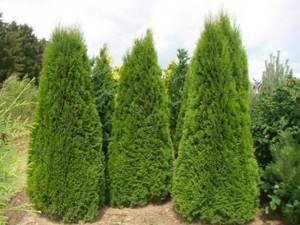
Yew
In the landscaping of summer cottages, yew and torreya are least often used, which, compared to other coniferous plants, are distinguished by their unusual shade tolerance. A distinctive feature of yew is the absence of any odor.
It tolerates cutting well, so it is often used to create hedges.

It is easier to propagate by cuttings, since long-term stratification is required for seeds to germinate. But it should be noted that even an adult plant can tolerate transplantation without complications.
Warning! The berries, needles and other above-ground parts of the yew are poisonous, so you need to be careful when caring for the plant.
Unlike yew, torreya exudes a specific smell that not everyone likes. It is a low evergreen tree with a pyramidal crown and rigid linear leaves up to 8 cm long.
The plant is very unpretentious and frost-resistant; it can produce root shoots, which are used for propagation.
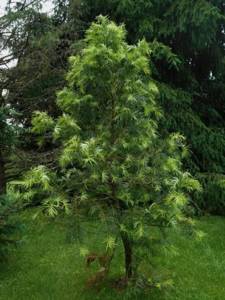
The most popular types and varieties of fir trees
Mini conifers are very popular among gardeners. They are compact, look good in small flower beds, and have crowns of different decorative shapes.
Canadian spruce (Picea glauca)
The most popular compact decorative form of Canadian spruce in our gardens is Conica; it was found at the beginning of the last century in Canada and gave rise to a whole group of dwarf varieties. Conica spruce is distinguished by a thick, dense, pointed columnar crown with light green soft needles.
Per year it grows in height by 6-10 cm, in width by 3-5 cm, maximum height is 3-4 m.
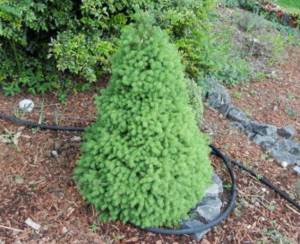
Mutants of Canadian spruce Conica are Laurin forms with extremely weak growth, not exceeding 1.5 m in height; Gnom with a conical crown, gray-green needles, growing annually by 3-5 cm and others, often sold under the name Conica.
The Nana form attracts with a wide, rounded crown up to 1-2 m high with numerous, dense, flexible branches and blue-gray needles.
Also interesting are the dwarf forms of Echiniformis - a very slowly growing plant, with yellow-green needles with a bluish-gray bloom, at the age of 30 years it can be 0.5 m high and about 1 m in diameter and Zuckerhut with bright green, very soft needles, dense , conical crown with a pointed top, height 1.5 m and diameter up to 0.8 m.
Prickly spruce (Picea pungens)
The popular form Glauca Globosa has a loose crown at a young age; over time it becomes flat-rounded, with very densely spaced branches.
The height of an adult plant is 1.5-2 m, crown diameter is 2-3 m, annual growth is 8 cm in height, 10 cm in width, the needles are needle-shaped, thick, slightly sickle-shaped, silver-blue.

The Moll form with a dense, wide-conical crown and bluish-white needles and the squat Montgomery form with gray-blue needles are distinguished by their slow growth.
Some semi-dwarf forms of prickly spruce are interesting. The Baby Blue Eyes form with a dense, pyramidal crown and long bluish-blue needles reaches a height of 4-5 m in adulthood.
The original form of Bialobok is named after the author, Polish gardener Jan Bialobok. A young tree has an asymmetrical crown; over time it becomes broadly conical; its height at the age of 10 years is about 2 m.
This form is especially attractive in the spring, when young growths with a straw-yellow color appear against the background of bluish-green needles.
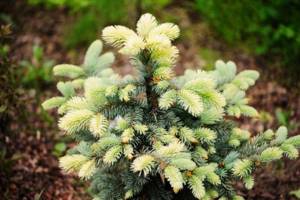
Norway spruce (Picea abies)
The widespread form of Acrocona with a wide-conical crown 2-3 m high and 2-4 m wide is distinguished by ascending and arched drooping shoots with dark green needles.
The abundantly formed reddish-brown, hanging cones are attractive.
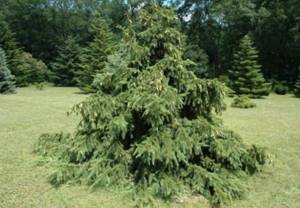
The miniature form of Lilliput at a young age has a dense, cushion-shaped crown, then becomes cone-shaped, at the age of 10 years it does not exceed 0.6 m.
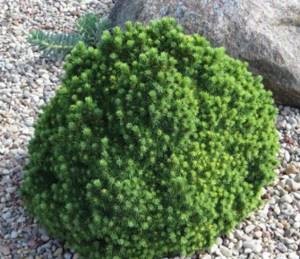
The Little Gem form can be classified as microscopic, its growth is 2-3 cm per year, the shoots rise obliquely upward and form a cushion-shaped crown with a nest-like depression.
The needles are thin, thick, light green.
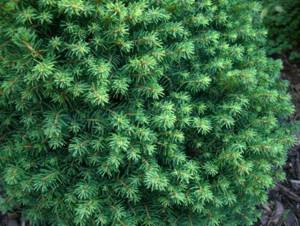
The round or nest-shaped crown of the Nidiformis form is formed by fan-shaped, obliquely growing branches, its height is up to 1.2 m, width up to 2.5 m, the needles are light green.
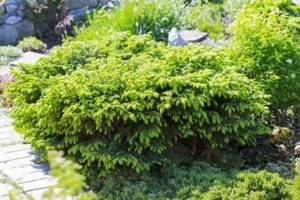
The miniature form of Pusch with a dense, rounded crown at the age of 10 years does not exceed 0.3 m in height and 0.6 m in diameter. The numerous reddish-purple young cones that form at the ends of the shoots look attractive.
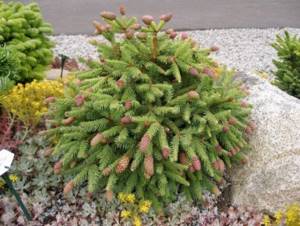
One of the ancient forms of Pygmaea with a rounded crown no more than 1 m high and light green needles is common in gardens. Thanks to its narrow, columnar, dense crown and dwarf size (height no more than 2 m at the age of 30 years), the Will's Zwerg form is recommended as a Christmas tree for small areas.
The Pumila Glauca form with a flattened, flat-rounded crown is popular.
With age, the lower branches droop in a trail and lie on the ground. The needles are thick, dark green with a bluish tint. Plant height no more than 1 m, diameter 4-5 m.
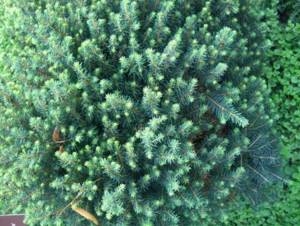
Serbian spruce (Picea omorica)
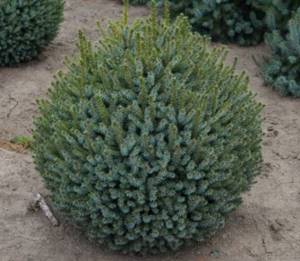
The most popular is the semi-dwarf form of Serbian spruce Nana, 4-5 m high and 3 m in diameter. The crown is dense, wide-columnar, and the needles are dark green.
Black spruce (Picea mariana)
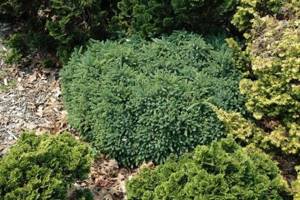
The dwarf form of Nana with a rounded crown at the age of 10 years reaches about 0.3 m in height and 0.8 m in diameter, the needles are thin, silvery green.
Miniconifers - “small spool, but expensive”
Miniature conifers - what could be better? They grow slowly, have compact sizes and attractive appearance. In combination with stone, such plants recreate mountain landscapes on a reduced scale on the site.

Fantasy mountain landscape with miniature conifers.
The advantages of dwarf conifers are obvious: they do not require pruning or shearing, retain a compact, dense shape, and tolerate wintering well under the snow. In a small area you can place many miniatures and watch their development for many years. It is this fact that determines the growing popularity of “mini” in our gardens. The range of miniature coniferous “pom-poms” is growing catastrophically.
The main source of new varieties - witches' brooms - is practically inexhaustible. Millions of similar formations can be found in nature. The main work of breeders is to select the most unusual, expressive specimens from a mass of similar ones. Next is a matter of technology. Thousands of gardeners around the world are now “infected” with this exciting activity - searching for beautiful brooms. Propagated by grafting, witches' broom balls appear on the market within a year or two.
There is no need to rush into purchasing miniconifers. Many of them are as similar as two peas in a pod. Of all the variety, it is better to choose the most outstanding ones, for example, those with unusual colored needles, colored growths, short needles, bright buds, early cones...
Despite the huge selection, new items appear every season that make connoisseurs tremble. So, in the 2010 season, this was the Korean fir 'Icebreaker'
- an amazingly colored miniature with sparkling silver needles.
The most popular varieties and types of juniper
Not only the usual varieties of juniper look attractive, but also forms with different shades of needles, for example yellow.
Juniper horizontalis (Juniperus horizontalis)
- The form of Golden Carpet is a creeping shrub about 10 cm high, up to 1.2 m in diameter with golden-yellow, small, needle-like needles.
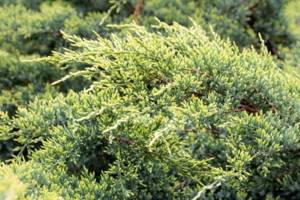
- Lime Glow form with spectacular needles that change color from lime green to lemon yellow, the height of a creeping shrub is from 0.3 to 0.6 m, the diameter at the age of 10 years is 1.2-2.4 m.
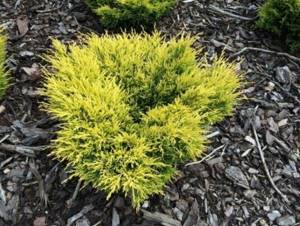
- Densely branched shrub Wiltonii with silver-blue needles does not exceed 10 cm in height.
Cossack juniper (Juniperus sabina)
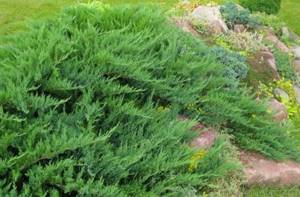
Numerous and easily accessible low-growing forms of this type of juniper make it easy to choose the most suitable variety for a small garden:
- Cupressifolia 0.5 m high with bluish-green, scaly, appressed needles;
- Nana up to 0.8 m high and 1.5 m in diameter with scaly dark green needles;
- Rockery Gem 0.4-0.5 m high, 2-3.5 m in diameter with blue-green needles;
- Tamariscofolia is about 1 m high and 2 m in diameter with bluish, needle-like needles.
Common juniper (Juniperus communis)
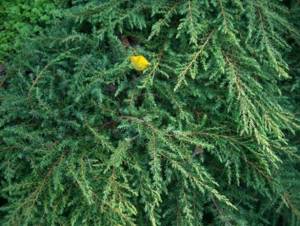
The Green Carpet ground cover form at the age of 10 years does not exceed 10 cm in height, diameter up to 1.3, forms a dense carpet with dark green needles, excellent for rocky gardens and strengthening slopes.
Pfitzer's juniper (Juniperus x pfitzeriana)
The hybrid species, obtained from crossing Chinese and Cossack junipers, is represented by several garden forms. For a small garden, Mint Julep is suitable with a dense, wavy, spreading crown about 1-1.5 m high and up to 2-3 m in diameter. The needles are green with a bluish tint.
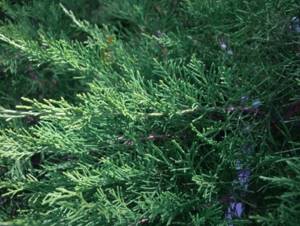
The most popular varieties and types of fir
Fir is not as popular as spruce or juniper. But in terms of decorative characteristics they are in no way inferior to them. Its branches grow densely, the needles are soft and fluffy, and the crown is well formed.
In addition, fir is rich in healing essential oil, so the air in the area will also be healthier.
Balsam fir (Abies balsamea)
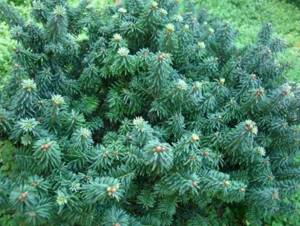
The dwarf form Nana, up to 0.5 m high, is distinguished by a rounded crown shape. Spreading, dense branches grow horizontally and reach 2-2.5 m in diameter.
The needles are short, thick, dark green, with white and blue stripes on the underside.
Smooth-fruited fir, or subalpine fir (Abies lasiocarpa)

The popular dwarf form Arizonica Compacta resembles silver spruce. The wide-conical, regular, dense crown with strong branches reaches a height of 0.8 m by the age of 10, the annual growth of shoots is 3-5 cm, the needles are silver-blue, up to 3 cm long, non-thorny, densely covering the shoots.
Korean fir (Abies koreana)
The miniature form of Kohout's Icebreaker fir with a compact, spherical crown at 10 years of age does not exceed 0.3 m in height and diameter.
The spirally twisted needles are interesting, while the upper light green side is not noticeable and the silvery-white underside of the needles is revealed.
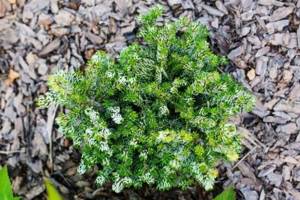
The compact crown of the Tundra shape reaches no more than 0.4 m in height and 0.6 m in diameter by the age of 10; the dark green needles have a light underside.
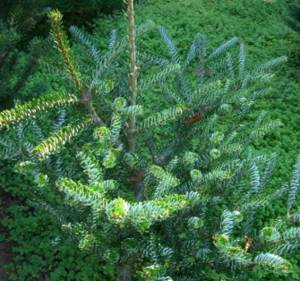
Low-growing ornamental coniferous trees and shrubs for the garden
Let's start our selection with short representatives. After all, miniature plants are in great demand because they allow you to create original picturesque compositions.
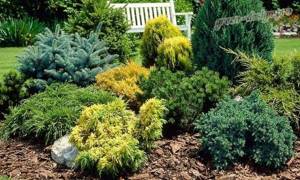
The most popular are:
- Mountain Pine "Golden Glow" . The shrub develops slowly, but can become a bright accent in any garden, regardless of the time of year. The needles have a pronounced dark green color in the summer, and with the arrival of cold weather they become yellow, especially at the top. Height - up to 60 cm, but only after reaching 10 years of age, and diameter - up to 95 centimeters. The variety is frost-resistant and can withstand temperatures down to -35 degrees. Prefers areas where there is enough sunlight.
- Juniper "Blue Chip" . Height – only up to 25-35 centimeters. The branches can grow sideways up to 1.5 meters. The needles are silver-blue in color and become more saturated in winter. The plant is not capricious, prefers loose soils, and suffers from excess moisture.
- Cross-paired Microbiota Jacobsen. Some branches spread along the ground, and some rise slightly. Therefore, supports are often installed next to the bush. The height of the crown is up to 70 centimeters, and in volume – up to 60 centimeters. Over the course of a year, growth is only 3 centimeters. The needles are dark green in color, with the arrival of cold weather they become brownish, and in the spring they turn green again. Such crops germinate in partial shade; even in shaded places they will feel good.
- Cypress tree "Aurora" . It is distinguished by wavy patterns, the branches are spirally twisted, they create a crown with an irregular cone. The height of the shrub reaches 65 centimeters. The plant is frost-resistant, but at the end of the winter season it is better to cover it with agrofibre to prevent fading from sunlight. Prefers moist soil types and illuminated areas.
Such representatives will find their application in creating borders, designing gazebos, entrance lobbies, and for landscaping verandas or stairs.
The most popular varieties and types of pine
Due to their durability, beautiful crown shape and minimal maintenance, pine trees are often used in landscaping and landscaping.
Weymouth pine (Pinus strobus)
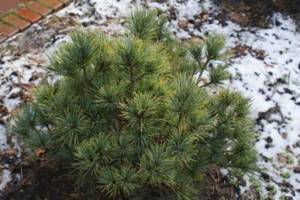
The spectacular North American pine has long, soft needles. Compact forms are suitable for amateurs:
- Macopin is a shrub 1.5-2.5 m high with a rounded or conical crown and bluish-green needles;
- Pumila is a dwarf with a rounded crown, about 1 m high, annual growth is up to 5 cm, needles up to 10 cm long are silver-green, slightly curved;
- Radiata is a shrub with a spherical crown with a height and a diameter of about 1.5 m, the needles are bluish-green, directed upward.
Mountain pine (Pinus mugo)
Several low-growing forms of mountain pine are known, suitable for landscaping small gardens:
- Hesse is a cushion-shaped shrub no more than 0.5 in height with dark green needles 7-8 cm long;
- Gnom is a shrub with a spherical crown, about 2 m in height and diameter, dark green needles, 3-4 cm long;
- Kobold is a shrub with thick branches and a wide crown about 1 m high, bright green needles 2-3.5 cm long;
- Mini Mops is a tiny shrub with a cushion-shaped crown 0.3-0.4 cm high and about 1 m in diameter, annual growth is 2 cm in height, 3 cm in width, the needles are dense, sharp, dark green, the shape is sometimes used for grafting on the standard;
- Paul's Dwarf is a dwarf form with a height and diameter of 0.6-0.9 m.
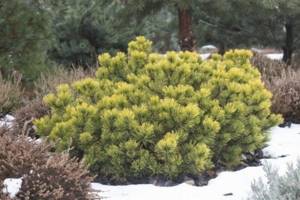
Conifers with a twist
Of constant interest to lovers and collectors are eccentric conifers with a unique appearance - weeping, flat, bizarrely curved, with unusual cones or needles. Weeping, drooping forms of all types of conifers - not frequent guests in our gardens - will always be in fashion. They are indispensable in design as eye-catching accents that play the role of “living sculpture”.

Norway spruce 'Inversa' is a flexible material for the designer.
Increasingly, weeping forms are used as a material for free creativity - designing hedges, gazebos with living roofs, and even creating decorative arches and trellises. The range of such conifers continues to expand: new exotic varieties are appearing, for example, the well-known weeping Weymouth pine 'Pendula'
now exists in a miniature version called
'Niagara Falls'
.
The varieties with unusual “decorations” are shocking - for example, the dwarf spruce '
Herman Nau' , completely covered with tiny cones from an early age, or
the Korean fir 'Fengel'
with breathtaking cones.
The most popular varieties and types of thuja
Thuja has gained well-deserved popularity among amateur gardeners for its frost resistance, durability, unpretentiousness to soil composition and valuable decorative qualities that make thuja an indispensable attribute of many garden compositions.
Western thuja (Thuja ocidentalis)
Among the many different forms of thuja occidentalis, it is easy to choose compact plants even for a miniature garden.
Danica form with a spherical crown 0.6 m high and 1 m in diameter, the needles are scaly, thick, soft, dark green, suitable for single and group planting.
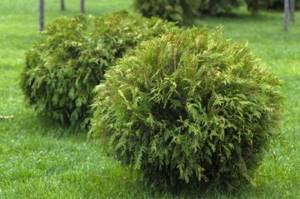
- The dwarf cushion-shaped Golden Tuffet with thin, flexible, hanging shoots at the age of 10 years does not exceed 0.6 cm, diameter is about 1 m. It is interesting for its golden-orange needles, which retain their color in winter.
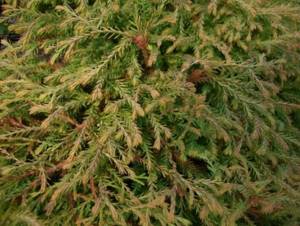
- The slow-growing Teddy form with a spherical crown has a height of about 0.5 m at the age of 10 years. The blue-green needles acquire a bronze color in winter and are suitable for container planting.
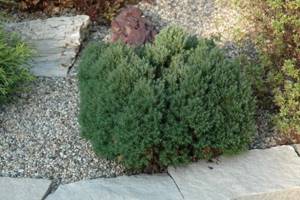
The list of dwarf forms of thuja occidentalis is long:
spherical light green Globosa and tiny dark green Globosa Nana, ovoid-round Hoveyi with light green matte needles and
Dumosa with a flattened crown, Little Gem with a flattened crown and rising shoots and spherical, dense Tiny Tim. The choice is huge; you can choose suitable shapes for each garden.
Dwarf coniferous crops are at the peak of popularity today; they are planted by both owners of six-hundred-acre plots and owners of estates who are not limited by area.
It's all about their attractiveness and diversity, because just a few plants allow you to create spectacular compositions that are stable at any time of the year.
General rules for placing conifers in the garden
Landscape designers, when creating compositions from coniferous trees, adhere to the following rules:
- A composition of trees and shrubs will be holistic and harmonious only if the distance from the place of the most convenient view is no less than two times the length of the composition itself.
- The most preferable background for coniferous plants is a well-groomed lawn.
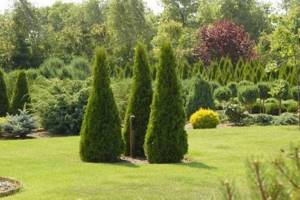
- Coniferous shrubs and trees look beautiful near ponds in the company of weeping deciduous plants.
- An effective solution is to place conifers in landscape design with their orientation to the east or west.
- It is not advisable to plant coniferous plants next to roses, since evergreens tend to oxidize the soil, which is bad for sensitive roses.
Conifers are indispensable when creating a gravel garden.
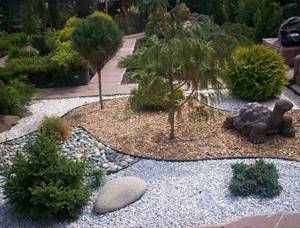
Coniferous plants of different types have a wide range of colors. When combining plants into a single design element, it is important to consider a number of rules for color combinations:
- A composition of three elements should contain no more than 2 colors.
- A composition of five elements will look impressive if it contains no more than 3 different shades.
- Compositions consisting of 25 or more copies must be divided into groups of 3 elements, in which rule No. 1 must be observed.
When arranging conifers, it is important to take into account the growth of plants and the state of the crown in adulthood, so that the harmony of the composition is not disturbed over time.
The use of decorative coniferous shrubs in landscape design
Decorative varieties are used to decorate areas. They are not as tall as wild ones, are easy to care for and have a more decorative appearance (their needles and branches are thicker). Most often in landscape design you can find the following names of coniferous shrubs:
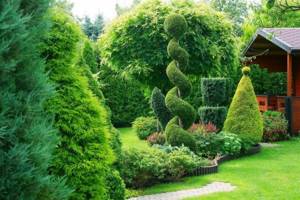
Needles - decoration for any area
- juniper;
- pine;
- spruce;
- thuja;
- yew;
- cypress
For your information! Coniferous shrubs combine with each other and can emphasize colors and create contrasts against the background of other ornamental plantings. And the evergreen crown allows the flower beds to remain a decoration of the site during the cold season.
Another unique feature of these plantings is the ability to create shapes and unusual shapes for the crowns of shrubs. Arborvitae, junipers and common spruces are best suited for such experiments. Intricate shapes, geometric shapes, perfect balls - imagination can create a unique design.
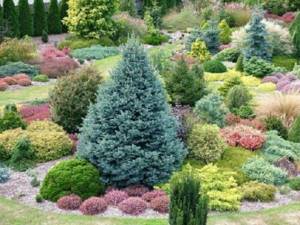
The combination of evergreen beauties in landscape design
Compositions from coniferous plants
Coniferous mixborder
A mixborder is created along the path, against the background of a fence, house wall or hedge. When arranging a coniferous mixborder, plants of various shapes, colors and heights are used.

Low specimens are planted at the foot of the composition, tall conifers are planted in the center, and tall coniferous trees and shrubs are placed in the background.
The mixborder is created according to the following principles:
- the vertices of one or another row should not create a straight line;
- the height and width of the mixborder should be in harmony: the area with tall plants should be wider than the area with compact plantings;
- repetition of three to five elements makes the composition more rhythmic and interesting.
Hedge
When zoning a garden, hedges made of coniferous plants are often used. Such a fence can also be placed around the perimeter of the site.
In landscape or modern gardens, evergreen hedges are used as a backdrop for colorful perennials.

A dense functional hedge can be created by planting plants in a checkerboard pattern in 2-3 rows. A formed planting of Norway spruce is considered to be a fairly practical and less demanding hedge.
To divide the site into functional zones, medium-sized conifers, about 1-2 m high, are often planted.
All-round compositions
An all-round composition is a group of plants that should look equally impressive from any view. Most often, such compositions are placed on round flower beds, lawns and in paving openings.
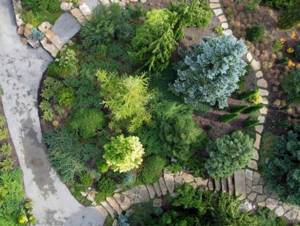
Rules for creating a 360-degree composition from conifers:
- The tallest specimen of a coniferous plant is planted in the center of the composition.
- Plants of smaller height are planted around the central element at equal distances.
- The height of the second row should be no more? and not less than 1/3 of the height of the central conifer.
- The height of the third and fourth rows should decrease proportionally, without covering the previous row and emphasizing its beauty.
- When creating asymmetrical compositions, plants are placed in such a way that it is visually impossible to draw a straight line through three elements.
From dwarfs to giants
A coniferous plant in the garden is not necessarily a huge pine or spruce tree, towering several meters, although some people like such specimens. Graceful evergreens also come in miniature forms. For example, some varieties of junipers do not grow up to 40 cm in height. There are also real dwarfs in the world of conifers, rising several centimeters above the ground.
The sizes of representatives of the coniferous department vary from centimeters to tens of meters, so to create a multi-tiered composition you can only take such trees and shrubs.
Rules for creating coniferous gardens
When organizing plantings of coniferous plants, you should adhere to the following principles:
- carefully select trees so that they do not violate the overall compositional style;
- the most successful background design for conifers is a neat lawn with short grass;
- conifers go well with spreading trees near bodies of water;
- the rose garden and coniferous trees should not be located nearby (under the influence of conifers, the soil is susceptible to oxidation, which roses cannot tolerate);
- An excellent place for planting coniferous trees is a gravel garden.
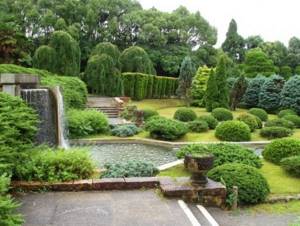
Cedar
You have already seen that coniferous cones come in incredible colors and shades. And cedar is no exception. The homeland of cedars is the Mediterranean and the Himalayas. And the Lebanese cedar is one of the symbols of Lebanon.
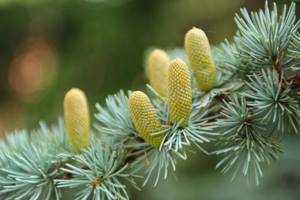
Deodar.
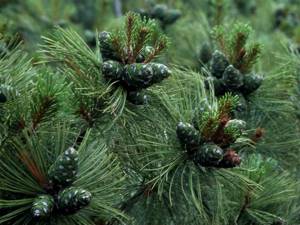
Cedar slate. Grows in China, Japan, Korea.
Methods of caring for coniferous plantings
It is a mistake to believe that conifers do not require special care and can grow in any conditions. To prevent the plant from being threatened by diseases, we follow the following rules:
- We periodically apply fertilizers that do not contain nitrogen. Compost in small volumes is most suitable.
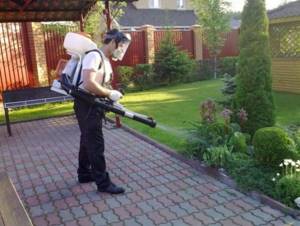
- Coniferous trees do not tolerate very heavy watering. Watering is necessary only when the soil dries out. The older the plant, the less watering it requires.
- Coniferous trees respond well to mulching. Sawdust or small wood chips are suitable. It is best to add mulch before the onset of winter in a layer of at least 5 centimeters.
- Strong burning rays of the sun harm conifers, burning them. During periods of bright sun, it is worth covering the plantings with a covering fabric.
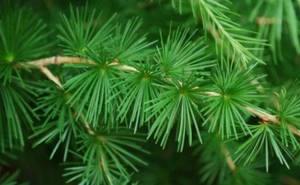
Stately, strict, neat coniferous trees will decorate any garden. And the benefits of the smell of pine resin and peace make such a garden a favorite place to relax.
Why is it worth using decorative coniferous trees and shrubs in the landscape?
Decorative coniferous shrubs are one of the most beautiful representatives of the flora that are used in landscape art.
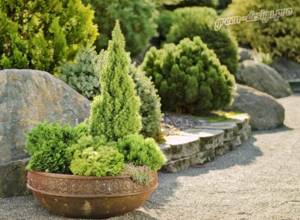
This love of gardeners for these types of plants is explained by several reasons:
- Variety of pine needle colors. This feature allows you to achieve an original decorative effect and create the illusion of a large amount of greenery even in the smallest areas.
- Versatility. Conifers are perfect for any style - from classic to oriental. The main condition is the correct selection and arrangement of plants.
- All-season beauty. Coniferous representatives will delight the garden all year round. A pleasant aroma will only complement the perception of the created comfort and relaxation.
Ornamental coniferous shrubs for the garden are unpretentious representatives, since they are not afraid of frost, they do not need a lot of light or regular watering. And the natural beauty of the crown will allow owners to minimize the effort of pruning crops. Such specimens can be used in different compositions, combining them with a variety of flowers and trees.
